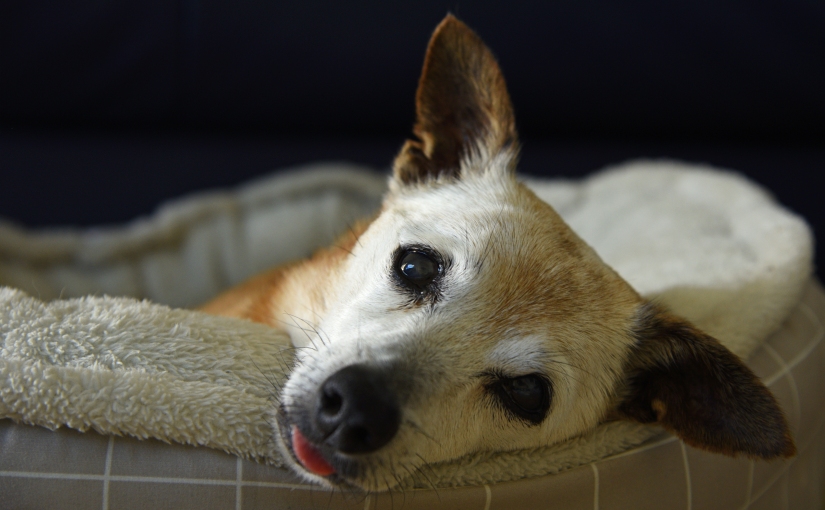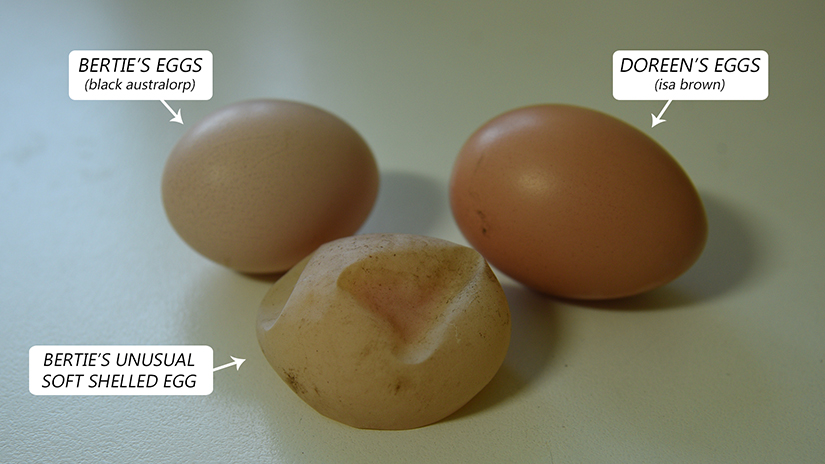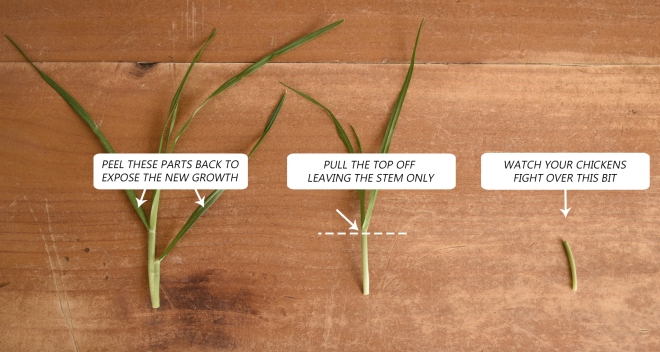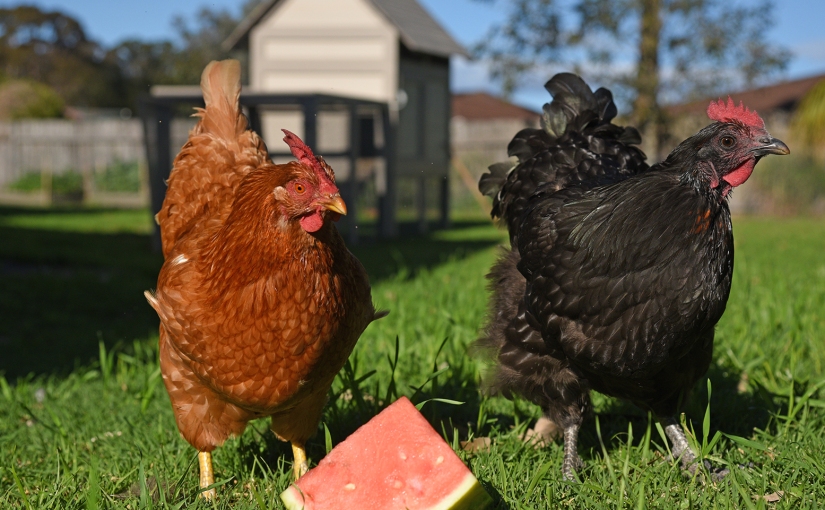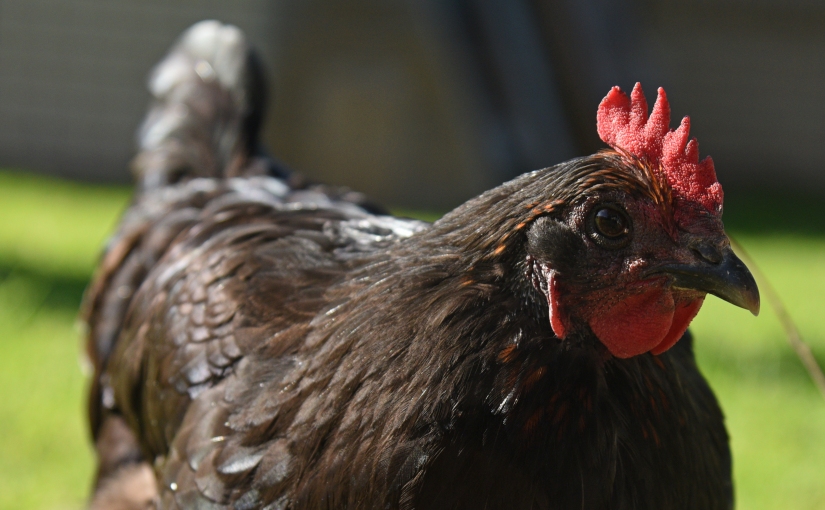Earlier this year, after six long weeks (plus a four week break inbetween when we were on our honeymoon), we finally finished our new chicken coop. When I say ‘finished’, I actually mean almost finished, because there are a couple of minor things I need to do when I have the time.
As I mentioned in my last post, I never actually drafted proper plans for the coop. I did a couple of 3d sketches of what I wanted, worked out in my head how the main parts would come together, and then went from there.
I needed the coop to be manoeuvrable, so I decided to build it in three separate parts (that would remain separate).
Below, you can see parts 1 and 2. Part 1 is an outdoor section that can be closed up if need be and part 2 is the base of the ‘house’. There is an outdoor roost in part 2.
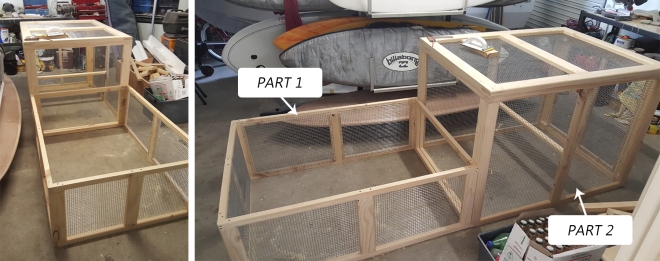
The timber is quite thick – from memory, I think it is about 32 or 40mm thick. It is definitely heavy than our previous triangular coop, however I wanted it to be thicker and stronger.
Part three, ‘the house’ was the more challenging section of the three. I think this is mainly because I knew in my head what I wanted, and was happy to adapt new changes along the way, whereas my husband was over all the changes I was making and getting more and more frustrated as we progressed.

I wanted the house to be raised up off the ground so the chickens had the space underneath to use, and so it would not kill the grass (we rent). I also needed to make it as easy as possible to clean.
The pitch of the roof is quite high for two reasons. The first reason was so that when I cleaned it I could actually stand and lean my upper body inside the house without stooping. The second was to dissuade Bertie from flying up on top of it.
There are vents running along the top of both sides, which are always open. The eaves extend down far enough to protect these from the rain (sometimes a little gets in, but only when the wind is blowing it sideways!). There is also a vent with a door above the nesting box that can be opened or closed depending on weather (for extra ventilation and light).
The whole back wall is a door, and there’s also a door on the opposite side of the nesting box.
The nesting box was created so we could easily access the eggs. The creation of this caused quite a few arguments. My husband thought we didn’t need it, and I thought we did. Not only would it look cool, but it would also serve a purpose.
In all honesty, if I were to build this coop again I’d probably leave it off. Neither Bertie nor Doreen use it. They both have a favourite spot in the back corner of the coop where they choose to lay their eggs. So it serves no other purpose than looking pretty.

A large tray forms the base of the coop, which slides out from the rear. It’s a little difficult to get in and out at this point, as I haven’t added any handles (that’s one thing that’s on the to-do list).
There are two roosts inside. They’ve been made so that they can be taken out if need be. I based them off the size of the roost in the original coop, and routed the edges. From my research I found that the size of the roost is important, and having sharp edges is not particularly comfortable for hens, hench the routing.
The pic above (and below) is the finished product. I used two different coloured paints, because I thought it would look better. Initially I wanted to retain the timber appearance with some sort of stain, however I could not find a suitable product that would be safe for the girls. I didn’t want to paint it, but in the end found it was going to be the best protection against the weather. I made sure to choose a paint that would be as safe as possible with little to no VOCs, and only painted the outside elements (including the inside of the doors).

While it’s certainly pretty to look at, the coop isn’t predator proof, at least not to the extent it would need to be if I lived in a rural area.
Here, the main problems would be dogs, foxes, snakes or possibly hawks. It’s unlikely that other dogs would end up in our yard, and I am yet to see any foxes around here. Plenty of kangaroos, but no foxes. We’re basically in suburbia, so there are rarely any hawks or snakes.
When we eventually end up on our own piece of land, I would need to make some changes to make it safer (especially against foxes), however a few adjustments will sort that out.
While it took 6 weeks to build, I am so happy with the end result. Doreen and Bertie have a nicer home to live in that doesn’t leak when it rains. Plus, it’s big enough for us to add some more chickies to this little flock. Now I just have to convince my husband!
